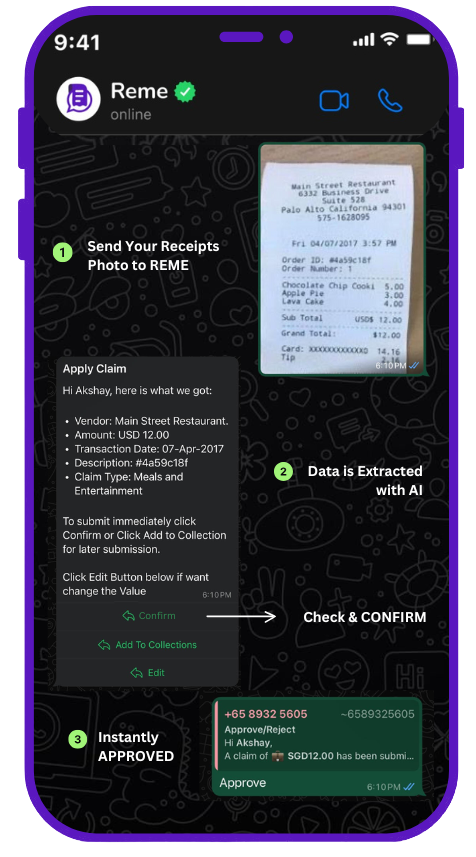In today’s interconnected global economy, businesses of all sizes are expanding their operations internationally. This expansion brings exciting opportunities but also introduces complex challenges in expense management. Managing expenses across multiple currencies and navigating diverse international compliance requirements can quickly become overwhelming without the right systems in place.
The Multi-Currency Challenge
For companies operating across borders, dealing with multiple currencies is an unavoidable reality. Sales teams travel to different countries, suppliers invoice in their local currencies, and employees incur expenses in various denominations. This creates several significant pain points:
Currency Conversion Complexities
When employees submit expense reports with charges in foreign currencies, finance teams must convert these amounts to the company’s base currency. This process introduces several challenges:
- Fluctuating exchange rates: Currency values change daily, creating uncertainty about the true cost of expenses.
- Conversion timing issues: Should expenses be converted at the time of transaction, submission, or reimbursement?
- Bank fees and exchange rate markups: Hidden costs can significantly impact the bottom line when processing international expenses.
Without an automated system, finance teams often resort to manual conversions using spreadsheets or online tools, increasing the risk of errors and creating inefficiencies.
Visibility and Forecasting Difficulties
Multi-currency expenses make budget forecasting and financial planning considerably more challenging. Financial leaders need clear visibility into spending patterns across all markets to make informed decisions, but fragmented data across currencies can obscure this visibility.
The Compliance Labyrinth
Each country has its own set of tax regulations, receipt requirements, and expense reporting rules. Navigating this maze of requirements presents significant challenges:
Tax Regulations and Recovery
VAT and GST recovery opportunities vary widely by country. In the European Union alone, VAT rates range from 17% to 27%, with different rules for reclaiming tax on various expense categories. Missing these recovery opportunities can cost global businesses thousands of dollars annually.
Documentation Requirements
Receipt requirements differ significantly across jurisdictions:
- Some countries require original paper receipts
- Others accept digital copies
- Many have specific information that must be included for tax compliance
- Receipt retention periods vary from 3 to 10+ years depending on the jurisdiction
Regulatory Reporting Obligations
From anti-bribery legislation to entertainment spending limits, global businesses must comply with a patchwork of regulations that vary by location. Failure to comply can result in penalties, tax audits, and reputation damage.
The Digital Solution: AI-Powered Expense Management
Modern expense management platforms powered by artificial intelligence are transforming how global businesses handle these challenges. Here’s how advanced solutions are addressing these pain points:
Automated Currency Conversion
AI-driven expense platforms can automatically:
- Convert expenses to the company’s base currency using real-time exchange rates
- Record both the original currency and converted amounts
- Track exchange rate fluctuations to provide accurate financial reporting
- Account for international transaction fees to calculate true expense costs
Smart Compliance Management
The most advanced platforms now incorporate global compliance rules directly into their systems:
- Tax engines that calculate recoverable VAT based on expense type and location
- Country-specific receipt validation that ensures all required information is captured
- Automatic flagging of non-compliant expenses before submission
- Documentation retention systems that meet various international requirements
Real-Time Visibility Across Borders
Today’s leading solutions provide:
- Consolidated dashboards showing spending across all currencies
- Normalization of data for consistent reporting regardless of origin
- Trend analysis that accounts for currency fluctuations
- Budget tracking in multiple currencies simultaneously
Implementation Best Practices
For companies looking to improve their global expense management processes, consider these implementation strategies:
1. Create Clear Global Policies
Develop expense policies that account for regional differences while maintaining overall consistency. These should address:
- Per diem allowances appropriate to each location
- Acceptable business entertainment expenses that respect cultural norms
- Approval hierarchies that incorporate local management
2. Integrate with Financial Systems
Ensure your expense management solution integrates seamlessly with:
- Accounting software for automatic journal entries
- ERP systems for comprehensive financial reporting
- Banking platforms for streamlined reimbursement
3. Prioritize User Experience
The most effective global expense systems are those that employees actually use. Focus on:
- Mobile-first design that works anywhere in the world
- Simplified receipt capture that works with various receipt formats
- Intuitive interfaces that minimize training requirements
- Support for multiple languages and currencies
4. Leverage AI for Automation
Artificial intelligence can transform global expense management through:
- Automatic receipt data extraction regardless of format or language
- Anomaly detection to identify potential fraud or policy violations
- Smart categorization of expenses based on merchant information
- Predictive analytics for expense forecasting
The Competitive Advantage
Organizations that effectively address multi-currency and international compliance challenges gain significant advantages:
- Reduced processing costs through automation
- Improved tax recovery rates
- Better cash flow management
- Enhanced regulatory compliance
- Increased employee satisfaction through faster reimbursements
By implementing an AI-powered expense management platform, companies can transform what was once a complex administrative burden into a streamlined process that provides valuable financial insights while ensuring global compliance.
In our increasingly borderless business environment, the companies that thrive will be those that can effectively manage the complexity of global operations while maintaining efficiency and compliance. Modern expense management platforms provide the tools to achieve this balance, turning expense management from an administrative challenge into a strategic advantage.
As businesses continue to expand globally, having robust systems to handle multi-currency transactions and international compliance isn’t just convenient—it’s essential for sustainable growth and success in the global marketplace.



